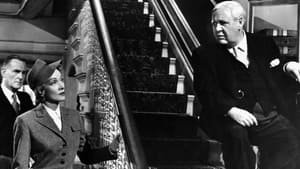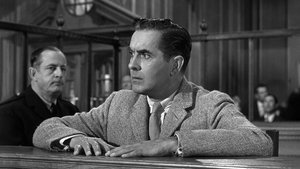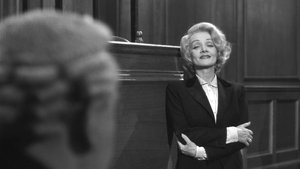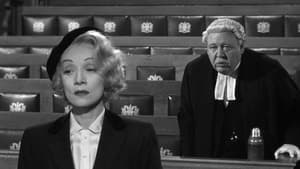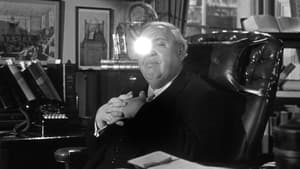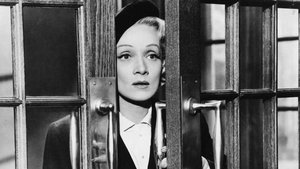Video Sources 0 Views
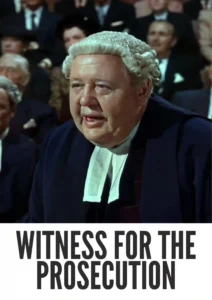
Synopsis

Step into the intense world of legal drama with Witness for the Prosecution, a gripping courtroom thriller from 1957, now brilliantly colorized to immerse you in its captivating story. Directed by Billy Wilder, this film delivers a masterful blend of suspense, mystery, and shocking twists within the confines of a high-stakes murder trial. Perfect for fans of legal dramas, classic film enthusiasts, and those who appreciate a meticulously crafted plot, this HD download brings a renowned piece of cinematic history to your screen.
Witness for the Prosecution centers around the trial of Leonard Vole (Tyrone Power), a charming but struggling inventor accused of murdering a wealthy widow, Emily French. All the evidence points towards his guilt, and his only hope rests with his brilliant and experienced barrister, Sir Wilfrid Robarts (Charles Laughton).
As Sir Wilfrid takes on the case, he quickly discovers that the situation is far more complex than it initially appears. The key witness for the prosecution is Vole’s wife, Christine (Marlene Dietrich), a cool and enigmatic German woman who provides shocking testimony that could seal her husband’s fate.
The trial unfolds with a series of dramatic revelations, unexpected turns, and intense courtroom clashes. Sir Wilfrid must use all his legal skills and instincts to navigate the web of deceit and uncover the truth behind Emily French’s murder. The film culminates in a stunning climax that will leave you questioning everything you thought you knew. Witness for the Prosecution is a suspenseful and thought-provoking drama that explores themes of justice, betrayal, and the fallibility of human perception.
The film boasts an exceptional cast of actors who bring this suspenseful story to life:
-
Tyrone Power as Leonard Vole
-
Marlene Dietrich as Christine Vole
-
Charles Laughton as Sir Wilfrid Robarts
-
Elsa Lanchester as Miss Plimsoll
-
John Williams as Mr. Brogan-Moore
Witness for the Prosecution firmly falls into the genre of courtroom drama, with strong elements of mystery and suspense that are characteristic of Billy Wilder’s directorial style. Its intricate plot, sharp dialogue, and tense atmosphere create a captivating and unforgettable cinematic experience.
Released in 1957, Witness for the Prosecution reflects the post-war fascination with legal dramas and the exploration of moral ambiguities within the justice system. The film was produced during a time when Hollywood was increasingly adapting stage plays for the big screen, and Witness for the Prosecution is a prime example of how a well-crafted play can be transformed into a compelling cinematic experience. While Witness for the Prosecution is considered one of the finest courtroom dramas ever made, it offers valuable insights into the social and cultural concerns of the 1950s.
This colorized version of Witness for the Prosecution has been meticulously restored using state-of-the-art digital techniques, enhancing the visual appeal while preserving the film’s original atmosphere of suspense and intrigue. The colorization process involved carefully analyzing the grayscale tones of the original black and white footage and assigning appropriate colors to each scene. Advanced algorithms for color palette selection and image enhancement were used. This painstaking process breathes new life into the characters and settings, making the story even more engaging for modern audiences. While debates continue about colorizing classic films, it undeniably introduces these cinematic treasures to a wider audience, ensuring their enduring legacy.
-
: Billy Wilder
-
: Billy Wilder, Harry Kurnitz, Larry Marcus
-
: the play by Agatha Christie
-
: Russell Harlan
-
: Arthur P. Schmidt
-
: Arthur Hornblow Productions
-
: United Artists
-
: 116 minutes
-
: MP4
-
: HD (1080p)
-
: Compatible with most devices, including smartphones, tablets, computers, and smart TVs.
Witness for the Prosecution (1957) is widely regarded as a masterpiece of the courtroom drama genre, earning critical acclaim for its suspenseful plot, sharp dialogue, and outstanding performances. The film was nominated for several Academy Awards, including Best Picture, Best Director, and Best Actor for Charles Laughton. Its enduring popularity and critical recognition solidify its place as a classic of world cinema. As a captivating and thought-provoking film, Witness for the Prosecution continues to resonate with audiences today.
-
: What is Witness for the Prosecution about?
-
A: Witness for the Prosecution is a courtroom drama about a man accused of murder and the shocking testimony of his wife.
-
-
: Is Witness for the Prosecution (1957) a well-regarded film?
-
A: Witness for the Prosecution is considered one of the finest courtroom dramas ever made, earning critical acclaim and numerous awards.
-
-
: Is this version of Witness for the Prosecution colorized?
-
A: Yes, this version has been professionally colorized to enhance the viewing experience.
-
-
: What makes Witness for the Prosecution interesting for classic film fans?
-
A: Witness for the Prosecution offers a masterclass in suspenseful storytelling, with a complex plot and outstanding performances.
-
-
: What is the download format?
-
A: The download format is MP4, which is compatible with most devices.
-
-
: What resolution is the download?
-
A: The resolution is HD (1080p), providing a high-quality viewing experience.
-
Watch Witness for the Prosecution Today!
